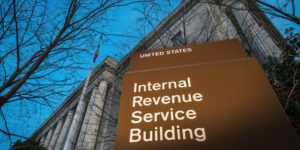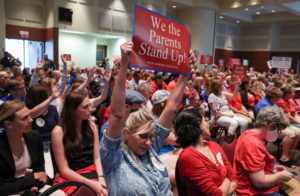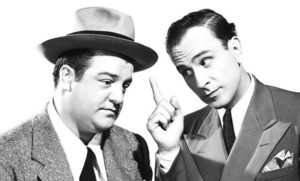Back to the Future With COVID

The CDC released new guidelines for COVID-19 on Aug. 11. And although we heard virtually nothing about it from the Biden administration or the mainstream press, what it did was astounding.
After two years of lockdowns and massive restrictions of personal liberty – justified by “following the science” – the CDC dropped all of the mandates that hobbled the economy and put it into a recession. (Not to mention further dividing an already divided population along political lines.)
Gone are the mask and vaccination-card mandates. They are no longer required in retail businesses, public buildings, museums, arenas, movie theaters, airlines, or public transportation of any kind. Gone, too, are the many requirements for social distancing. And most astounding of all, the CDC is no longer requiring the non-vaccinated to quarantine for five days, even if they have been “in close contact with an infected person,” so long as they haven’t tested positive or shown symptoms.
In short, the CDC’s new position is that COVID-19 should be treated like we have traditionally treated all other common viruses – by allowing for individual discretion rather than nationwide, economically damaging, non-legal bureaucratic mandates that never truly followed the science.
When I was writing about COVID two years ago, I noted how politically charged this issue had become. And I predicted that the restrictions would continue so long as the Democrats stayed in power or until they, and those that feared the virus, realized that those measures don’t work – until they realized that the virus was a serious threat to only a small percentage of the population.
Because the CDC decided to protect the rest of the population that didn’t need protection by imposing massive business shutdowns may have reduced the GDP by as much as a trillion dollars, while, at the same time, restricting personal liberty through the implementation of unprecedented extra-Congressional (i.e., not legally legislated) restrictions on personal liberty. (Arguably the primary political/social/ethical principle upon which our country was founded.)
Although it was never reported by either the CDC or the mainstream press, the data re mortality are now quite substantial. If one corrects for the idiotic CDC stipulation that dying “with” COVID-19 is equal to dying “from” COVID-19, it’s become clear that there was no significant reduction in either cases or deaths between the states and countries that imposed the strictest mandates and those that had the least stringent. Click here to learn more.
87,000 New IRS Agents… but Not to Worry!

The so-called Inflation Reduction Act (see the Aug. 9 issue) has $80 billion earmarked for the IRS. The lion’s share of that money will go for the salaries of 87,000 new agents whose primary job will be to conduct more audits and enforce their claims.
And by “enforce,” they mean it. The job, as advertised by the IRS, requires applicants for the job to be prepared to “carry firearms and be willing to use deadly force, if necessary.”
Not to worry, the Biden administration says. Companies and individuals that earn less than $400,000 a year won’t be affected. Those 87,000 new IRS employees will be working full-time to get at big businesses and billionaires that “aren’t paying their fair share of taxes.”
If that’s the case, I’m wondering… Why do they need 87,000 agents? Depending on your source (Forbes Magazine or The New York Times, there are 735 to 935 billionaires in the US. Add that to the roughly 500 businesses that make a billion or more and you have approximately 1,500 targets for these new agents. Let’s see… 87,000 divided by 1,500. That works out to around 60 agents dedicated to each billionaire company or person!
Hmm. I’ve been going through a several-year audit myself. And though I’m not nearly a billionaire, I do file a long-form tax return. And the IRS has done a fine job so far, as near as I can tell, with just a single agent assigned to my case.
As to the argument that these billionaires aren’t paying their fair share of taxes, Joel Bowman, writing in Bonner Private Research, has this to say:
Never mind that Elon Musk, to take the most conspicuous example, cut the IRS an $11 billion check last year, the most paid by any single citizen in American history and, in itself, almost enough to fund the entire IRS… and never mind that, like him or not, love or hate his companies, agree or disagree with his politics, Mr. Musk nevertheless employs 110,000 people across his various businesses, each of whom (presumably) pays their own taxes.
Let’s go instead with Elizabeth Warren’s assessment of the situation and assume Musk is a “freeloader” and needs to “pay his fair share.” And let’s go ahead and assume his “fair share” is… 100%. Everything he owns.
And let’s say that goes for ALL America’s billionaires. (After all, Bernie Sanders said they “shouldn’t exist.” Who are we to argue with The Bern?)
So you confiscate 100% of the billionaire class’s wealth. At $4.7 trillion, you’d have enough money to cover the nation’s bar tab for… less than one fiscal year!
No. Taxing billionaires and billion-dollar companies is not going to balance the books. If history has anything to tell us about it, the effect will be lower relative incomes for working- and middle-class Americans and more unemployment. To pay for the Inflation Reduction Act (and the $6+ trillion the government has borrowed in the last several years), they will have to increase taxes on all the measly millionaires and the companies that are making measly millions, resulting in a wider scourge of lower relative wages, higher unemployment, and ultimately higher inflation.
That’s how it looks from here. Let me know what you think.
UCLA Creates Database to “Track Attacks on Critical Race Theory”

In an exciting step forward for identity politics, and by reinventing rationality, the UCLA law school has initiated a program to track down and prosecute individuals and groups that oppose the teaching of Critical Race Theory (CRT) in schools across the country.
In what I’m sure they perceive as a noble venture, they are funding an effort to support the Justice Department’s war against a threat that they claim is greater than the threat posed by the folks that brought us 9/11.
As of Aug. 2, their new database has screened nearly 24,000 media articles and identified “479 instances of anti-CRT activity since August 2021.” Not surprisingly, it showed that this activity is “much more pervasive and extensive than generally reported.”
Click here for details.
 MarkFord
MarkFord

